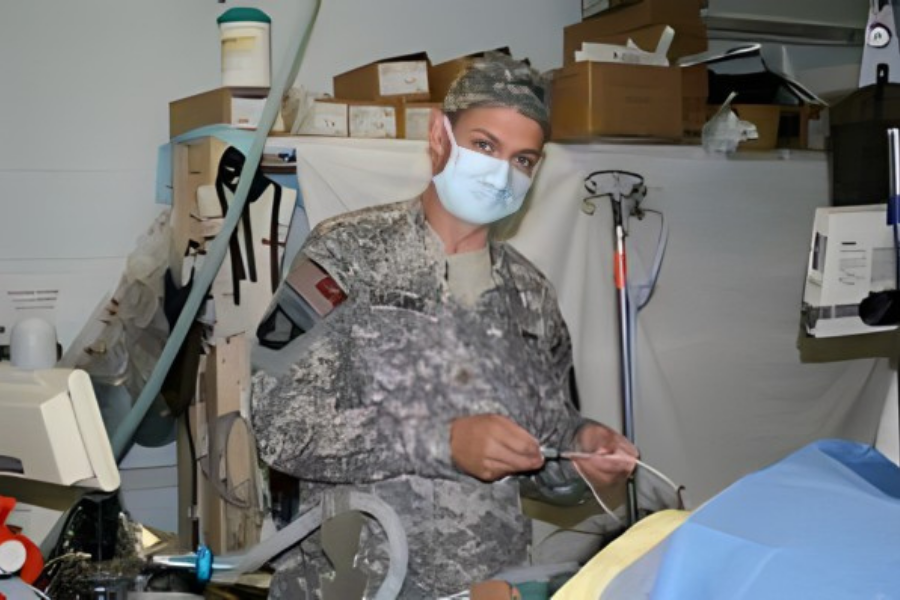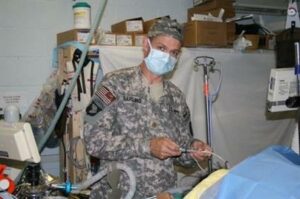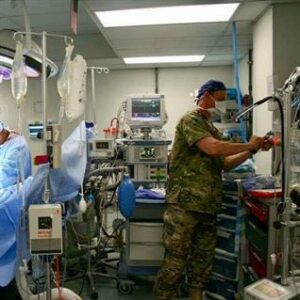
As an Army nurse anesthetist for more than 20 years, COL Charles Darling, DNP, MSNA, CRNA, knows firsthand the value Certified Registered Nurse Anesthetists (CRNAs) bring to the U.S. military.
“CRNAs are the ones who are on the battlefront of all the wars we’ve had,” Darling said, adding that CRNAs are the primary provider of anesthesia in the military, not physician anesthesiologists. “CRNAs are treating all of our soldiers on the front line.”

Darling, who lives in the Seattle area, retired from the U.S. Army Reserves in April 2022 after 37 years of service. He joined the Army at age 17 as a junior in high school, then attended nursing school. Following seven years spent on active duty, he decided to attend anesthesia school. He served the rest of his years in the reserves as a CRNA, deploying to Iraq in 2007, and to Afghanistan three times—in 2008, 2011, and 2017. He currently works per diem at the Madigan Army Medical Center, located on Joint Base Lewis-McChord outside Lakewood, Washington, and serves as chief of anesthesia at a plastic surgery center in Tukwila, Wash.
“The Army has contributed more to my training for my civilian job than the other way around,” he said. “My background being in the Army has helped me in my civilian jobs be more independent and to act quickly and safely under pressure.”
CRNAs practice to the full scope of their license and training, without supervision, in the U.S. Army, Navy, and Air Force and are often the sole anesthesia provider on forward surgical teams. Darling said in the military CRNAs do more than give anesthesia, utilizing the full range of skills they developed through their education and training.
He said during his deployments, in addition to providing anesthesia, he has placed central lines, run walking blood banks and performed massive transfusions, and has also acted as an ICU intensivist, managing patients on ventilators in the ICU.

“CRNAs are versatile because of our nursing background,” he added. “We have the skillset to practice independently.”
“We are fully independent, because CRNAs are the only anesthesia provider that gets deployed in combat zones. CRNAs are on forward surgical teams, whereas physician anesthesiologists are not. We have to be able to rely on our full set of skills,” Darling said.
Admission to a nurse anesthesiology program requires a baccalaureate or graduate degree in nursing, a license as a registered professional nurse and/or advanced practice registered nurse, and at least one year of full-time work experience as a registered nurse in a critical care setting. CRNAs receive 7-8 ½ years and nearly 9,000 clinical hours of education and training. Numerous peer-reviewed studies have shown that CRNAs are safe, high quality and cost-effective anesthesia professionals who should practice to the full extent of their education and abilities, according to AANA’s CRNA Fact Sheet.
CRNAs’ versatility, education, and training has made them the predominant providers of anesthesia care in the U.S. military since the Civil War. They practice on the front lines, navy ships, and aircraft evacuation teams around the globe.
“CRNAs practice independently and treat our soldiers without the help of anesthesiologists. We’re it, downrange,” Darling said.
